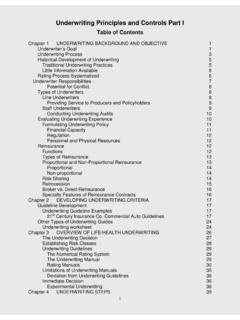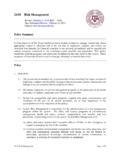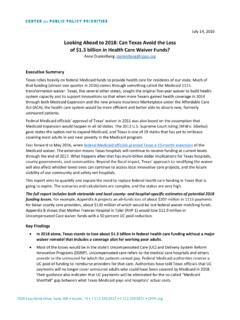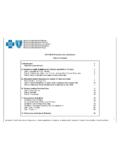Transcription of Workers Compensation Focus - BestEd.com
1 Workers Compensation Focus Chapter 1 THE TRADE Workers Compensation Safety by Chapter 2 EXPLANATION OF THE Policy PART ONE Workers Compensation PART TWO ..5 EMPLOYERS LIABILITY INSURANCEPART OTHER STATES PART EMPLOYER DUTIES IF INJURY PART FIVE PART SIX INFORMATION GENERAL INFORMATION PAGE Chapter 3 ..12 POLICY ENDORSEMENTSC ommon Notice of material Limited reimbursement for employees injured in other Outer Continental Jones Officer/owner Chapter 4 STATE Workers Compensation COVERAGE Figure 1 2001 Nonsubscription Figure 2 Employer Nonsubscription Rates by Statutory Limitations on Medical Table 1 State-by-State Comparisons Statutory Workers Compensation Coverage Requirements for Private Sector Statutory Provisions Relating to Choice of Treating Table 2 State-by-State Comparison Statutory Provisions Relating to Initial Choice of Treating Types of Income Benefits Available in Texas and Other Waiting Periods and Retroactive Periods for Income Table 3 State-by-State Comparisons of Statutory Waiting Table 4 State-by-State Comparisons of Statutory Retroactive Temporary Total Disability (TTD)
2 Table 5 State-by-State Comparisons of Temporary Total Disability (TTD) Benefit Rates and Benefit Duration as of January Permanent Partial Disability (PPD) Table 6 States That Use Benefit Schedules to Pay Permanent Partial Disability (PPD) Benefits for Certain Table 7 Methods States Use to Pay Permanent Partial Disability (PPD) Benefits for Unscheduled Statutory Compensation Rates for Permanent Partial Disability (PPD) Table 8 State-by-State Comparisons of Permanent Partial Disability (PPD) Benefit Rates and Benefit Duration, as of January Statutory Caps on Income Table 9 State-by-State Rankings of Temporary Total Disability (TTD) Benefit Table 10 State-by-State Rankings of Temporary Total Disability (TTD) Benefit Minimums36 iiTable 11 State-by-State Comparisons of Temporary Total Disability (TTD) and Permanent Partial Disability (PPD) Benefit State Workers Compensation System Administrative Table 12 Organizational and Administrative Structures of State Workers Compensation Chapter 5 THE DEFENSE BASE ACT (DBA).
3 43 The Federally Mandated Workers Compensation System for Overseas Government Workers Compensation in the United Federal Workers The Defense Base Act (DBA)..46 Legislative Basic Provisions of the Defense Base Act (DBA)..47 DBA DBA DBA Benefits for Foreign DBA War Hazards Compensation Act (WHCA)..50 Selection of Defense Base Act (DBA) Department of State (DOS) and the Agency for International Development (USAID)..52 Department of Defense (DOD)..52 Army Corps of Engineers (USACE) Pilot Costs to the Federal Army Audit Agency (USAAA) Report on DBA Insurance under Options for Single-Source Contract for DBA Experience Rating for DBA Federal Chapter 6 A POLICY CASE MEMORANDUM I. The III. Did Carlos Do It?..77 IV. Did Carlos Have Authority To Do It?..79 V. Is The "Deal" Enforceable?..82 VI. Doctrines of Waiver, Estoppel, and In Pari VII.
4 Tail VIII. Third Party Complaint Against Alexander & IX. Conclusion and Chapter 7 ..92 HISTORICAL PERSPECTIVEI ..92 Distinctions Between Common-Statutory Law 1. The common law system of employer's (1) THE DEFENSE OF CONTRIBUTORY (2) THE FELLOW SERVANT 3. THE DEFENSE OF ASSUMPTION OF 2. The system of employer's liability prior to the insurance and Compensation 3. The distinguishing characteristics of employer's liability 4. The modern conception of employer's 5. The distinguishing characteristics of workmen's Compensation 6. The distinguishing characteristics of workmen's industrial insurance II ..98 Historical Sketch of iii 7. Inception of movement for these 8. Previous investigation of the 9. The Chicago conference of employer's liability and workmen's Compensation 10. Subjects 11. Conclusions of the Chicago 12.
5 The work of the State 13. Executive 14. The Federal employers' liability and workmen's Compensation V ..101 Economic Basis of Compulsory Industrial Insurance 33. Statement of problem from the economic 34. Statistical studies exhibiting effects of old and new systems of 35. Statistical experience under compulsory State insurance in 36. The question of fault and prevention of accidents- Compensation -German 37. Experience in New 38. The Pittsburgh 39. The Wisconsin bureau of 40. The report of the Illinois 41. Ohio 42. Average amount received in settlement in Ohio under old 43. Attorney fees under old system in 44. Social and economic results of 45. Liability Insurance Statistics in 46. German statistics 47. Classification of causes of accidents in 48. Miscellaneous 49. Statistical results of the per cent of workingmen who receive Compensation under the common law and liability 50 Fundamental economic 51.
6 Remedies proposed-German and English 52. Specific provision against the economic insecurity of workingmen in the United 53. Argument for joint contribution by employer and employ ..115 VIII ..116 An Analysis of the Principles of the Legal Basis of the Laws 65. 66. The nature and remedial provisions of insurance 67. Nature of the obligation 68. Nature of the obligation imposed-German 69. The relationship between employer and employ under common law and modern liability 70. The relationship between employer and employ under insurance and Compensation 71. Validity as to employer-Deprivation of 72. Validity as to employ ..121 73. Validity as to employ - Vested rights in remedies 74. Validity as, to the State-Public 75 The problem of industrial 76. Whether these laws infringe constitutional 77. Insurance acts sustainable against constitutional objections under analogous decisions123 1 Workers Compensation Focus Chapter 1 THE TRADE OFF Workers Compensation is state-supervised insurance that provides Compensation medical care for employees who are injured in the course of employment, in exchange for mandatory relinquishment of the employee's right to sue his or her employer for the tort of negligence.
7 The trade off between assured, limited coverage and lack of recourse outside the worker Compensation system is known as "the Compensation bargain." While plans differ between jurisdictions, provision can be made for weekly payments in place of wages. Thus it is that Workers Compensation functions as a form of disability insurance. That is, Compensation for economic loss, reimbursement or payment of medical and like expenses (functioning in this case as a form of health insurance), and benefits payable to the dependents of Workers killed during employment (functioning in this case as a form of life insurance). Damages for pain and suffering and punitive damages for employer negligence are generally not available in worker Compensation plans. Proponents of Workers Compensation believe the system improves working conditions and provide an economic safety net for employees.
8 At the other end of the spectrum opponents criticize these laws for removing or restricting Workers ' common-law rights such as suit in tort for negligence. This is done in order to reduce governments' or insurance companies' financial liability. Workers Compensation Statutes Workers Compensation laws are designed to protect employees and their families from the financial consequences of accidental injury, disease, or death arising out of and in the course of employment. Prior to the enactment of these statutes, there were many obstacles to an employee's collecting from an employer for injury on the job. Today, every state has enacted a Workers Compensation law. The laws vary on occupations covered and benefits to be paid. All the laws, however, provide that the employee need not establish the employer's negligence or that the employee was free from negligence.
9 The only requirement is that the injury occurs on the job during the course of employment. If so, the employer is liable. This is an example of strict liability or liability regardless of fault. Some statutes give the employer the option of electing to be sued by employees. In those states, the employee must show employer negligence but is free from the common law defenses of contributory negligence and assumption of risk. Under Workers Compensation acts, employees obtain cash payments for loss of income as well as reimbursement for medical expenses. Some laws provide for the establishment of state Workers Compensation funds, and others require private insurance coverage to be obtained by the employer. Under some state laws, employers may "self-insure" if they meet certain qualifying financial standards. 2 In the past, Workers Compensation laws have been criticized because of the number of occupations left uncovered as well as for poor administration of the programs.
10 Because the statutes were designed to remedy recognized defects in the common law, the courts tend to construe the statutes liberally and, whether deciding coverage or the scope of employment, courts tend to find in favor of injured employees. Reform of the benefits has been proposed and the enactment of a federal Workers Compensation act may be the ultimate result if all states do not bring their Workers Compensation statutes up to a minimum standard. Safety by Statute Today, all state Workers Compensation statutes cover most public and private employment, and the interests protected are those of the Workers exposed to work-related illness or injury as well as the members of their families who otherwise would be responsible for medical bills and would suffer loss of income when a worker was disabled or killed. Some statutes include within the scope of their coverage civilian volunteers such as volunteer fire fighters or auxiliary police officers; some statutes specifically exclude domestic servants and farm Workers from the operation of the law.








